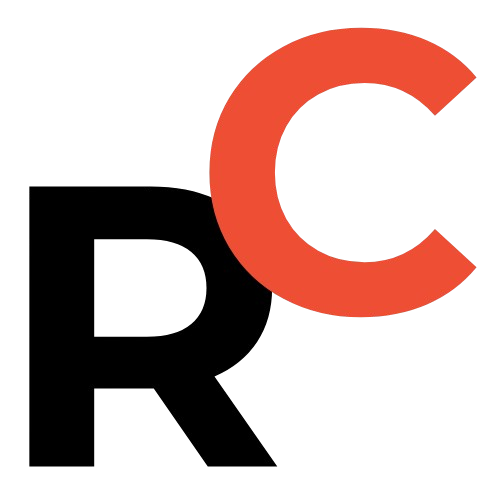Key Points
- The China Securities Regulatory Commission (CSRC) proposed an overhaul to its “Guidelines for Governance of Listed Companies” on July 25, 2025, signaling a foundational shift for China’s capital markets.
- The revisions introduce a comprehensive regulatory framework for directors and senior management, emphasizing greater personal liability and a higher performance bar.
- New rules push for a direct link between executive compensation and company performance, requiring formal remuneration management systems tied to operating results.
- The guidelines aim to protect minority shareholders by cracking down on controlling shareholders and refining rules for related-party transactions to limit negative impacts and prevent asset siphoning.
- This initiative seeks to align with other major laws like the “Securities Law,” creating a more cohesive and predictable regulatory environment for Chinese public companies.

China’s regulators are making a huge move on corporate governance for listed companies, and if you’re an investor, founder, or just watching the Chinese tech scene, you need to pay attention.
On July 25, 2025, the China Securities Regulatory Commission (CSRC) dropped a bombshell proposal to overhaul its “Guidelines for Governance of Listed Companies.”
This isn’t just another bureaucratic shuffle.
It’s a foundational shift aimed at boosting transparency, accountability, and the overall health of China’s capital markets.
Let’s break down what’s changing and why it matters.
The “Why” Behind the Shake-Up: Building a Modern System
This move is part of a bigger picture.
It aligns with two high-level directives from Beijing:
- The “Opinions of the State Council on Strengthening Regulation, Preventing Risks, and Promoting High-Quality Development of the Capital Market.”
- The “Opinions… on Improving the Modern Enterprise System with Chinese Characteristics.”
In simple terms, Beijing wants its publicly traded companies to operate with world-class standards while embedding “Chinese characteristics.”
The goal is to move beyond the “anything goes” era and build a more mature, stable, and attractive market for both domestic and international capital.

Resume Captain
Your AI Career Toolkit:
- AI Resume Optimization
- Custom Cover Letters
- LinkedIn Profile Boost
- Interview Question Prep
- Salary Negotiation Agent

The 4 Core Changes to China’s Corporate Governance Rules
The CSRC’s proposed revisions boil down to four critical areas. Think of it as a significant upgrade to the operating system for Chinese public companies.
1. Putting Directors & Senior Management Under the Microscope
The days of cozy board appointments and passive management are numbered.
The new guidelines introduce a comprehensive regulatory framework for directors and senior managers, covering their entire lifecycle with a company.
- Appointment: Tighter scrutiny on who gets to be a director or a C-suite executive.
- Performance of Duties: A heavy emphasis on forcing them to faithfully and diligently fulfill their responsibilities. This isn’t just a suggestion; it’s a new regulatory mandate.
- Departure: Clearer rules and accountability for when they leave the company.
The takeaway: Greater personal liability and a higher bar for performance for corporate leaders.
- Tighter Scrutiny: Increased vetting for appointments.
- Mandated Diligence: Requirement to faithfully and diligently fulfill responsibilities.
- Clearer Accountability: Defined rules for departure and associated liabilities.
- Increased Personal Liability: Higher consequences for non-compliance or poor performance.
2. “Show Me the Money”: Tying Executive Pay to Performance
This is a big one for investors.
The revised guidelines are pushing for a direct link between what executives earn and how the company performs.
Companies will be required to:
- Establish formal remuneration management systems.
- Ensure compensation for directors and senior management is directly tied to the company’s operating performance and their individual contributions.
This change is designed to better align the interests of management with the interests of shareholders. No more massive bonuses when the stock is tanking.
3. Cracking Down on Controlling Shareholders & Opaque Deals
This targets a classic problem in many markets: powerful controlling shareholders or “actual controllers” who treat the public company like a personal piggy bank.
The new rules aim to curb this by:
- Strictly limiting the negative impact of business competition from a controlling shareholder’s other ventures.
- Refining the rules for related-party transactions. This means more scrutiny and tougher decision-making requirements for any deals between the listed company and its major shareholders or their affiliates.
The goal: Protect minority shareholders and ensure the listed company’s assets aren’t being siphoned off through shady side-deals.
4. Syncing the System: Aligning with a New Regulatory Era
Finally, the CSRC is cleaning up the rulebook to make sure it’s consistent with other major laws.
This is about creating a cohesive and predictable regulatory environment.
Key alignments include:
- Syncing with the updated “Securities Law.”
- Integrating the “Administrative Measures for Independent Directors of Listed Companies.”
- Improving the process for the public solicitation of shareholder voting rights.
- Clarifying the duties of key board groups like the nomination committee and the remuneration and assessment committee.
This is a move to plug loopholes and ensure everyone is playing by the same, modern set of rules.
What This Means for the Future
The CSRC is currently asking for public feedback on these changes before making them official.
For investors, this signals a serious commitment to improving market quality and protecting shareholder rights.
For founders and executives of Chinese companies dreaming of an IPO, the message is clear: get your governance house in order now.
The bar for what it takes to be a public company in China is getting higher.
This is a pivotal moment for China’s capital markets, marking a clear step towards greater maturity and accountability. Keeping an eye on these developments in corporate governance for listed companies will be crucial for anyone operating in the region.

References
- China Securities Regulatory Commission Solicits Public Comment on Draft Revisions to “Guidelines for Governance of Listed Companies” – China Securities Regulatory Commission
- Opinions of the State Council on Strengthening Regulation, Preventing Risks, and Promoting High-Quality Development of the Capital Market – The Central People’s Government of the People’s Republic of China

![A-Share Buyback Boom: 18 More Chinese Companies Announce Major Moves with Loan Support [FreshFromChina]](https://freshfromchina.com/wp-content/uploads/2025/05/a-share-buyback-boom-18-more-chinese-companies-announce-major-moves-with-loan-support.png____FreshFromChina-150x150.png)
![The Stock Connect Effect: Jaw-Dropping Surges Meet Sobering Data on Pullback Risks [FreshFromChina]](https://freshfromchina.com/wp-content/uploads/2025/05/the_stock_connect_effect_jaw_dropping_surges_meet_sobering_data_on_pullback_risks.png____FreshFromChina-150x150.png)

